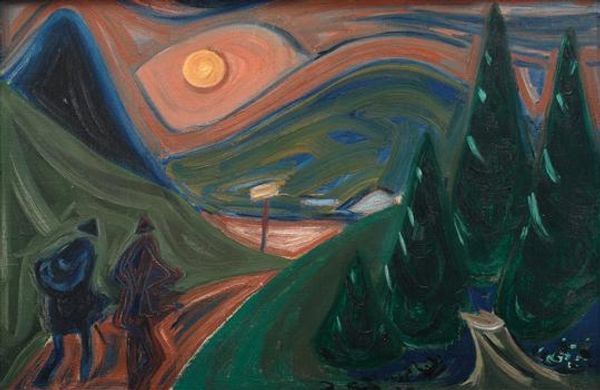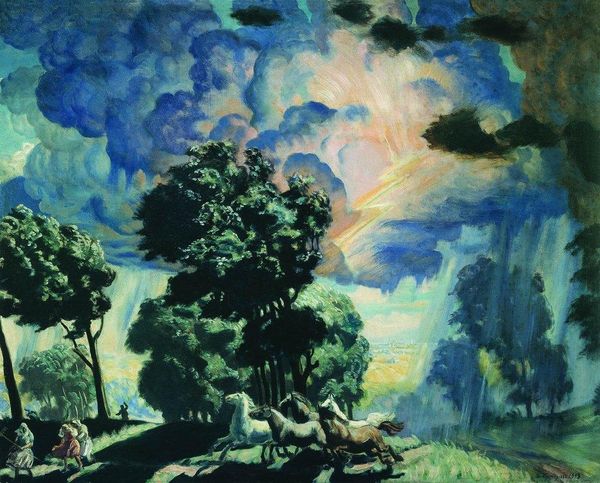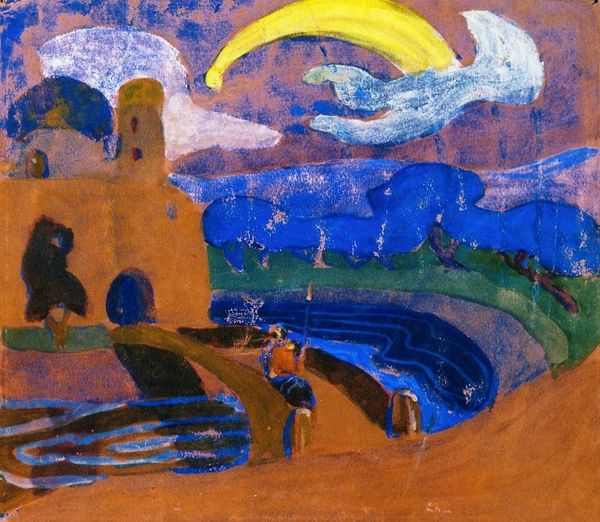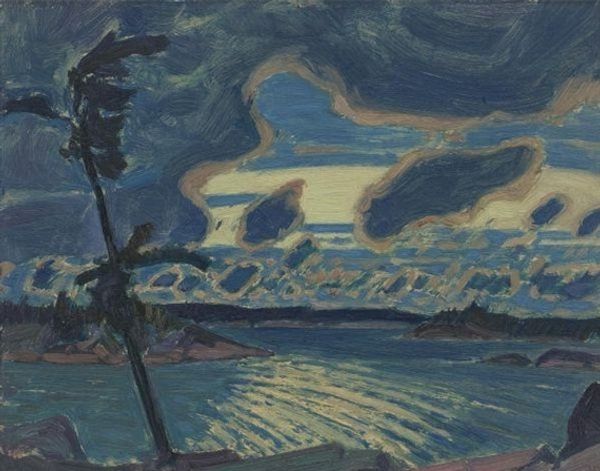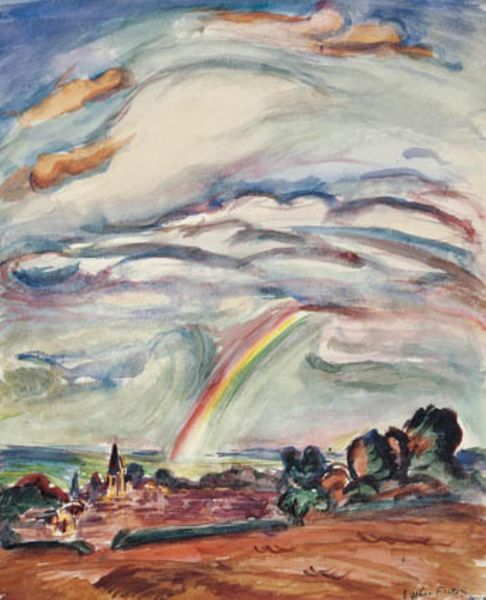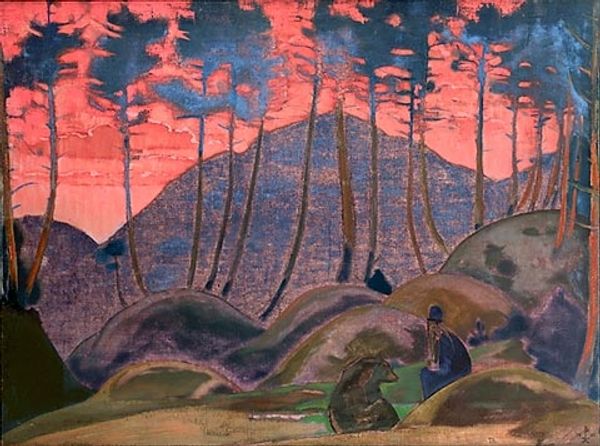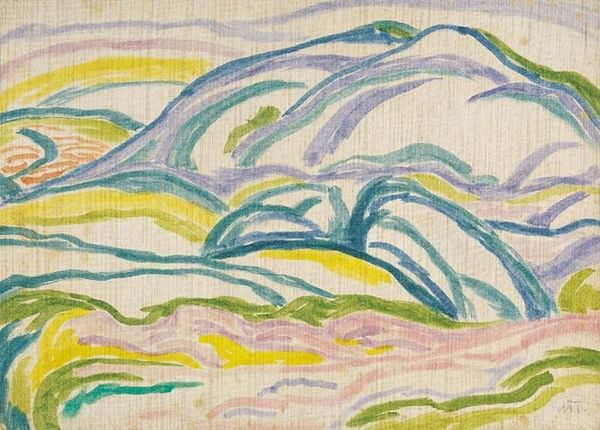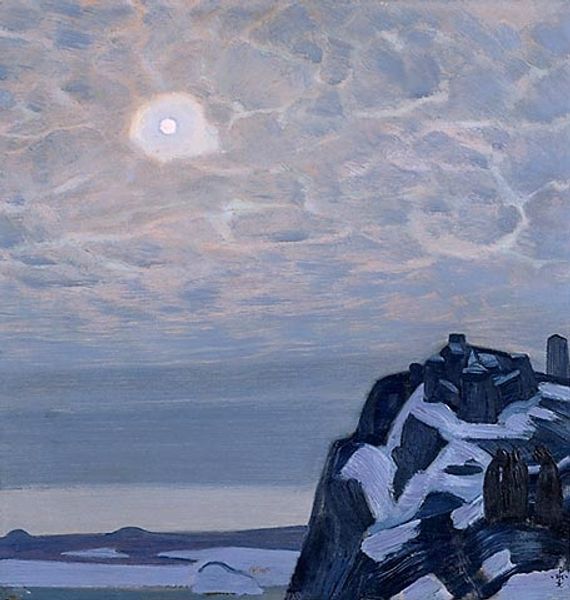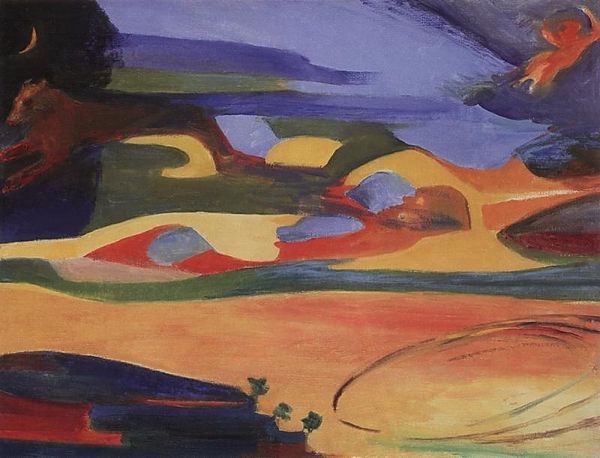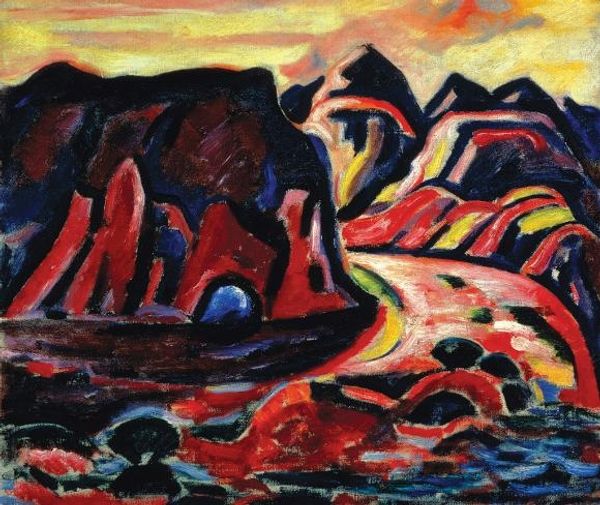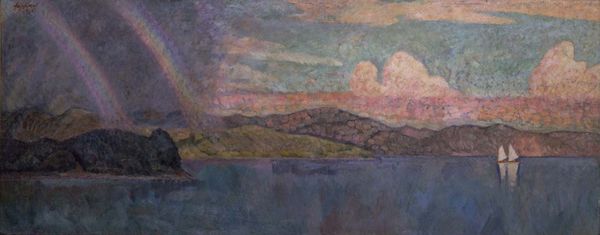
Copyright: Public domain
Curator: Here we have Josef Čapek's "Oblak II (Holubi)," or "Cloud II (Pigeons)" painted in 1935. Editor: It feels… like childhood on the cusp of something bigger, doesn't it? There's a stillness, a sense of watching the world change. I see vastness in the sky, a quietness over the scene… even a premonition perhaps. Curator: Interesting! That premonition may have substance; the oil paint rendered in expressionistic style might reflect something of the disquieting pre-war atmosphere in Europe at the time. The upward gaze meets billowing clouds with a certain foreboding—darker than one might expect from children playing outside a cottage. Editor: It’s like those cumulus clouds are heavy with things unsaid. I like how Čapek positions us slightly elevated, overseeing it all; notice the strategic location of figures at the foot of the giant clouds to underline their importance and proximity. And what about those birds! Like tiny hopes released into that charged sky. They seem deliberately contrasted in pure white to draw the eye, almost as symbols, eh? Curator: Yes, those “holubi” or pigeons seem almost precariously released right at the base of those storm clouds! As a member of the avant-garde with his brother Karel, Čapek often played with perspective and symbolism. Note also how the composition focuses largely on the atmospheric rather than specific shapes. Do you observe a formal hierarchy here? A tension even? Editor: Absolutely, you see how Čapek uses an expressionistic, almost naive hand to draw the natural environment: a certain freedom of form, and a playful treatment of light that keeps the painting vibrant despite its heavy themes. I almost want to push my fingers through those pink-and-blue swirls! And how nice to be looking over a simple rustic tableau with small buildings. What would be his inspirations, would you guess? Curator: Considering Čapek’s interests as an artist, writer, and even photographer, it’s reasonable to suggest this artwork presents a certain degree of personal, interdisciplinary reflections. But maybe it is best if we do not speculate further… Editor: Good call. What an atmospheric piece. Even with its naive simplicity, it feels rich and unsettling all at once!
Comments
No comments
Be the first to comment and join the conversation on the ultimate creative platform.
